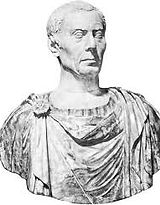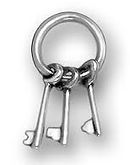Tuesday


Breakfast Session
8:00 - 8:50
Introductions of each attendee and a discussion of expectations for the course and challenges you face as a new leader.
Leadership Matters
Why Followers Follow
9:00 - 10:45
Summary
Does leadership matter? What does a leader really do? Why do people follow leaders? What is going on in the subconscious and conscious mind of the follower? How do Charismatic, Transformational, and Authentic principles contribute to the leader/follower relationship? What do modern knowledge-workers really need in a leader? How do we transform ourselves to become that type of leader? What should we understand about the relationship between leadership and management?
Background Reading
• How Successful Leaders Think (Roger Martin – HBR Packet).
• Why Should Anyone Be Led By You? (Robert Goffee and Gareth Jones – Harvard Business Review Packet).
• What Leaders Really Do (John Kotter – Leader’s Companion Compilation).
• Leadership is an Art (Max DePree).
Course Materials
• Video vignette - A. Phillip Randolph, one of the great human rights movement leaders demonstrates key principles about followership and leadership as he faces two Presidents of the United States and explains his purpose as a leader.
• Video vignette – Mary Lindell was a WWII hero facilitating the escape of Allied pilots out of occupied France. We will watch a few scenes of her bold actions as part of the discussion on leadership and why people follow. Excerpts are taken from the movie One Against the Wind.
Integrating Activity
Identify one historical figure you would like to learn more about and plan to studying this person and their leadership. Make sure to take an unbiased approach and look for both the ‘good’ and the ‘bad’. We will take time during this session to discuss your choice and share thoughts as a group. Additional suggestions for persons to study will be provided by the facilitator.
A Race Through Leadership History
11:00 - 11:50
Summary
The theory of leadership has a long history. We provide a high-level overview of that history and a brief introduction to the most predominant theories of leadership. We will cover the following theories and then discuss which theories are most appropriate for today’s environment:
Trait Great Man Transactional Transformational Authentic
Behavioral Contingency Situational Path Goal Servant
Background Reading
• Transactional and Transformational Leadership (James MacGregor Burns – Leader’s Companion Compilation).
• Behavioral Theories of Leadership (Paul Hersey and Kenneth Blanchard – Leader’s Companion Compilation).
• The Impossibility of Control (Gordon Whitehead).
Course Materials
• Presentation – Students will have access to this presentation after the course for their personal library.
Integrating Activity
Formulate the key leadership theories that will be most applicable in your organization. Attendees do a gap analysis and examine how to overcome shortfalls and move closer to their desired style of leadership.
Lunch
12:00 - 12:45
Lunch is provided courtesy of Captus5. You can use this time to catch up on email, phone calls, twitter, facebook, linkedin, or just enjoy the food and good company.
Consensus Driven Leadership
and
Destructive Leadership
1:00 - 1:50
Summary
In this segment we will discuss two concepts that exist in most organizations to some degree: Consensus driven leadership, and destructive leadership. We will explore what these are and learn a model to help us understand how these models come about, what to do when we see them, and how to avoid the pitfalls.
Background Reading
• Destructive Leadership Behaviour (Stale Einarsen, Merethe Schanke Aasland, and Anders Skogstad).
Course Materials
• Video vignette: Bob Newhart shows us pitfalls of consensus leadership.
• Video vignette: Hoosiers.
Integrating Activity
Using the destructive behavior matrix provided, identify where you are in the model and where your leaders are. Express in discussion and reflection if this is the right place to be, how you got there, and if you need to move – how you will do it.
Directive or Empowering Leadership
and
Dangers of Fictional Empowerment
2:00 - 3:45
Summary
In this segment we explore when a leader should be direct and when a leader should be empowering. If leadership is situational, then we have to know how to react when we find ourselves in different points of this continuum. We have to be cautious with empowerment. The word is too frequently thrown around as a fix-all concept. We explore the concept of fictional empowerment, the damage that does to our leadership reputation and to the people we lead, and we explore the extant elements required for true empowerment.
Background Reading
• When Should a Leader be Directive or Empowering? How to Develop Your Own Situational Theory of Leadership (Henry Sims, Samer Faraj, Seokhwa Yun).
• Leadership and the Problem of Bogus Empowerment (Joanne B. Ciulla).
Course Materials
• Presentation – Students will have access to this presentation after the course for their personal library.
Integrating Activity
Each attendee will outline his/her personal boundaries for empowering subordinate leaders and what resources will be needed to enable that empowerment.
Narcissistic Leaders
Pros? Cons?
5:00 - 5:50
Summary
In this segment we explore the surprising nature of narcissistic leaders. We learn what helps a narcissistic leader be good for the organization and what hinders the organization with a narcissistic leader. We learn from this model that most of us have some level of narcissistic tendency and learning how we use that tendency can either produce tremendous leadership success or harsh leadership tyranny.
Background Reading
• Narcissistic Leaders: Incredible Pros, the Inevitable Cons (Michael Maccoby – Harvard Business Review Packet).
Course Materials
• Video vignette: Henry V (Shakespeare – Kenneth Branagh)
Integrating Activity
Identify one narcissistic leader from your experience. Was that person successful? If not, what could have made him/her successful? If he/she was successful, what made him/her successful?
Incentives and Motivations that Work
4:00 - 4:50
Summary
In this segment we explore the fallacy of “motivating” others. We learn that motivation is an internal mechanism and we as leaders can only understand what motivates others and match their incentive model in a way to get top-level contributions. We also explore why financial incentives have limited power and we identify the incentive models that have a longer lasting influence on people.
Background Reading
• The Impossibility of Control (Gordon Whitehead)
• Not Your Father’s Organization (Gordon Whitehead)
Course Materials
• Video vignette: Nike commercial – Joan Benoit Samuelson
• Video vignette: Study on incentives
• Chart on theory of incentives broken down into absorbable language for each attendee to put into their library.
Integrating Activity
What motivates you? What motivates your subordinates? What incentive models does your organization currently use and are they aligned with how we get the most out of our people? What changes might you propose?








